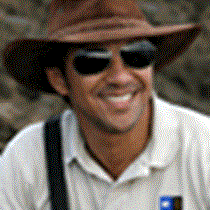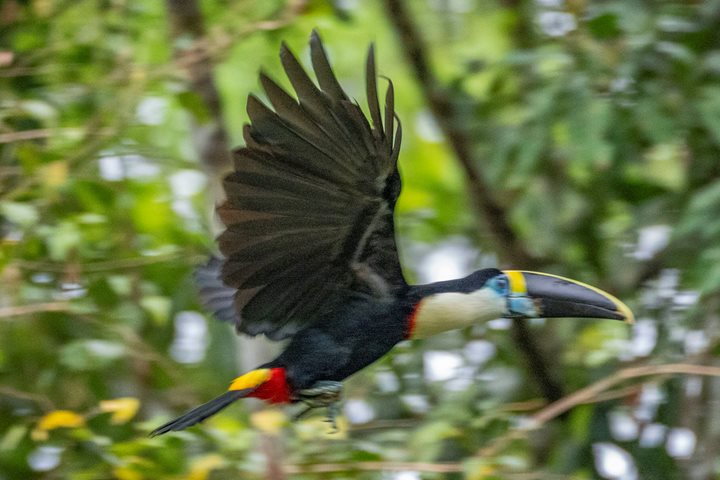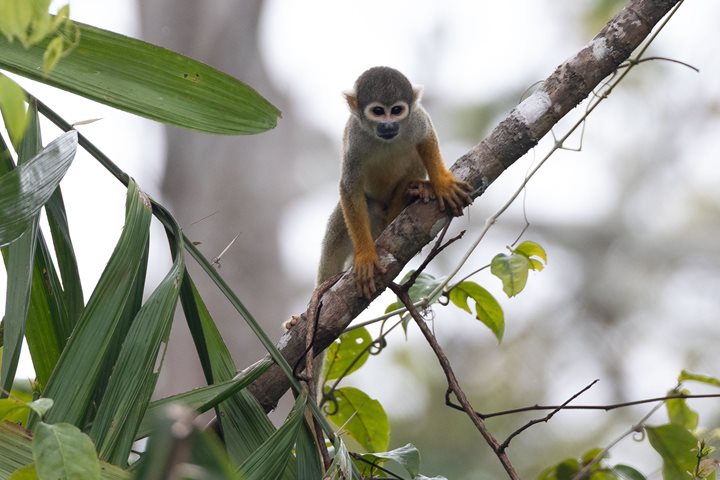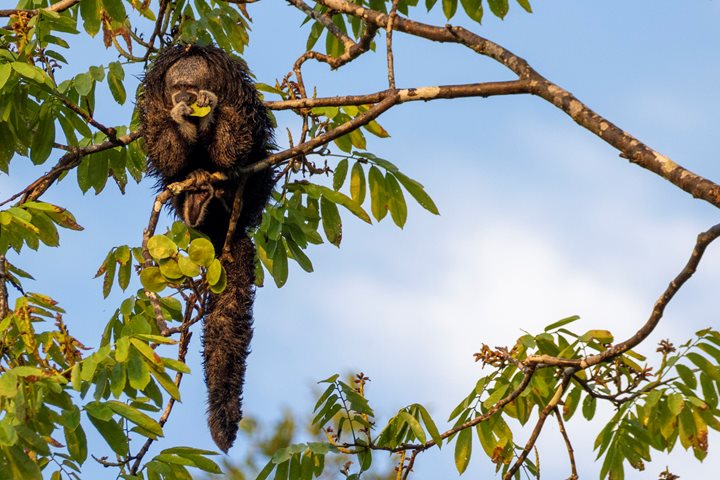It was close to 5:30 in the morning when I heard the steps of the naturalist walking along the corridors, ready to do the daily “wake up knock” on people’s doors. It was pitch-dark outside, but it was incredible to witness how, in a matter of minutes, the whole environment was illuminated rapidly with daylight! In this part of the world, there is almost no transition between night and day. In fact, by 6 am we were already onboard the skiffs on our way to our morning adventure, and little we knew the amazing array of wildlife and beauty that this region had prepared for us!
The chosen location was a section of the main Ucayali River known as Yanalpa. There is a community with the same name a few miles into the forest, but we were not focused on it, rather on the special type of wildlife that is usually found along the river section. The “aguajales” are a type of palm trees predominant in this region. They happen to be also the favorite nesting burrows for a specific type of birds, the blue and yellow macaws!
A combination of searching and luck, brought us a great encounter with these beautiful birds! Several red-bellied macaws were perched on trees, and a few blue and yellow macaws were in the vicinity as well. We got great views of them all, and the heavy fog that was being lifted from the warming waters of the river created a phenomenal view of the surroundings.
After our well-deserved breakfast, we boarded the skiffs aiming this time to Belluda Creek. This small and narrow creek was hiding several new species for both our bird and mammal lists. One by one we spotted several new sightings, such as the nocturnal owl monkeys, the bushy-tail forest rat, and even the extremely rare monk-saki monkey!
During our navigation to our next destination, we enjoyed several activities on board, such as a live presentation on how the indigenous communities live and dress, and even our crew gave a special demonstration on how to create animals by folding regular bathroom towels! Our photo instructor also gave us a great presentation, giving us all tips to get better photographs in forestry conditions, which is of course very handy in this part of the world!
Our late afternoon was spent exploring a large tributary of the Ucayali known as El Dorado River. This large body of water served as the perfect location to search for caimans, and armed with powerful spotlights, our eagle-eyed naturalist spotted several heads of caimans barely above the river waterline. We got close enough to have great views and to photograph them, so we departed the area quite content and happy to have experienced yet another highlight for our trip!







